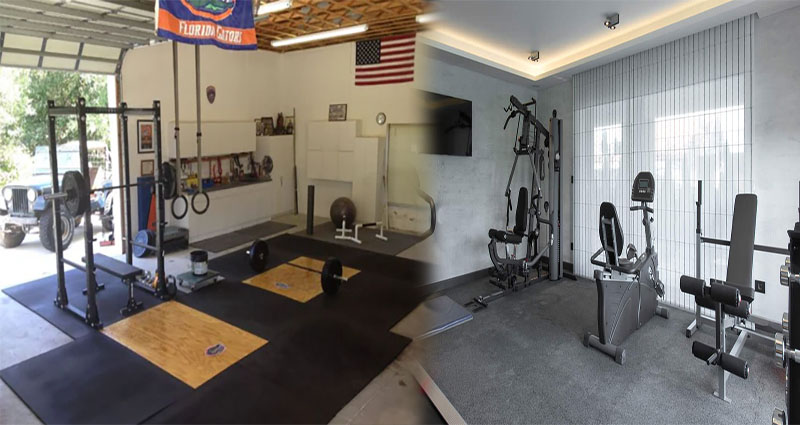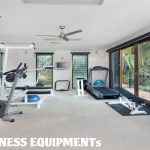I’m the type of person that goes to the gym and then gets bored. Or, I try to work out at home but can never find what I need. So, a few years ago, I decided to build my own home gym. It’s been one of the best decisions ever! You can build your own home gym on any budget and in any space. Here’s how:
Choose your area.
The first step to building your home gym is choosing the right room. You want to make sure that it’s not being used for other activities, like studying or watching TV. The space should also be big enough for all of your workouts, but small enough that you don’t feel overwhelmed by it. If you have any windows, doors and vents in the room, keep them in mind when looking for an ideal spot; these can cause problems with echoes or noise from outside sources (or vice versa). Finally–and this might seem obvious–you should think about how you can make the room look nice!
Measure out your space.
The first step to building a home gym is measuring out the area you want to use and making sure you have enough space. You’ll need to consider the space needed for equipment, as well as any cardio equipment such as treadmills and ellipticals. If you’re planning on using free weights, take into account how much room each one will take up when it’s in use–you don’t want them stacked up against each other so they’re difficult to reach!
Get creative with storage.
There are a few ways you can go about this, but the most important thing is to get creative.
- Closet: A lot of people have closets that they don’t use as much anymore or have extra space in their rooms that they could turn into a home gym. This is great because you can hang up all your weights, bars and other equipment on the walls and ceiling of your closet space so it doesn’t take up any floorspace at all!
- Garage: If you have access to one, this may be another good option for storing all of your equipment. It’s often easier than trying to find somewhere else in your house where everything will fit neatly together without taking up too much room (or getting in anyone else’s way).
- Basement: The basement is another good place because most basements tend not only have plenty of storage space but also enough room for exercising equipment like treadmills or elliptical machines (if those interest you). However if there aren’t any other rooms available then consider making sure nothing gets damaged by putting down some floor mats first before setting things down onto them – otherwise those expensive pieces might start getting damaged over time due simply being left out unprotected against moisture coming up through cracks between tiles/boards etc..
Get a good weight bench and free weights.
To build a home gym, you need a weight bench. A good quality weight bench and free weights are essential for any serious lifter’s arsenal. Weight benches come in many varieties and can be used for many different purposes. You may want to consider getting one with an adjustable incline or decline, as well as one that has a backrest if you want to be able to lie down while doing exercises such as the bench press or flys (where your arms extend straight out from your sides).
Choosing the right type of free weights depends on what type of exercise program you are looking to follow as well as how much money you’re willing or able spend on them (and whether or not they fit into your budget). For example: if someone wanted something simple but effective for strength training purposes then cast iron dumbbells would suffice; however if someone was interested in doing more complicated cardio workouts such as rope jumping then those same dumbbells probably won’t get very far since rope jumping requires more space around them than just standing up straight does!
Consider the right cardio equipment.
You’ll want to consider the following factors when making your final decision:
- Cost – The cost of cardio equipment can vary widely, so it’s important to do your research before committing. You may find that an elliptical machine is cheaper than a treadmill or vice versa. If money is tight, consider renting rather than buying.
- Space – You’ll need enough space for whatever piece(s) of cardio equipment you select–the bigger they are and/or the more parts they have, the more space they’ll take up in your home gym. If this isn’t a problem for you then go ahead and choose what works best for your budget!
- Noise Level – Some machines make more noise than others; if noise bothers people who live near where they’re kept then maybe think twice about getting one with a high decibel level rating (like treadmills).
- Safety Concerns – Some models might not be safe for certain individuals due to size/weight restrictions; check out product descriptions carefully before making any purchases!
Building a home gym can make fitness more convenient and you’ll have more motivation to work out regularly.
You can work out whenever you want.
You don’t need to pay for a gym membership or drive anywhere, which means that there’s no excuse not to exercise. You can do it in your own clothes!
And if you’re worried about feeling self-conscious while working out at home, don’t be: no one will be watching (unless they break into your house). In fact, having privacy makes it easier to focus on what matters most: getting fit!
Building a home gym can be a great investment and make fitness more convenient. You’ll have more motivation to work out regularly, which means you’ll see results faster than if you were doing it at home or in a commercial gym. Plus, having equipment like treadmills and elliptical machines in your house will let you get more cardio exercise even when bad weather keeps you indoors!












